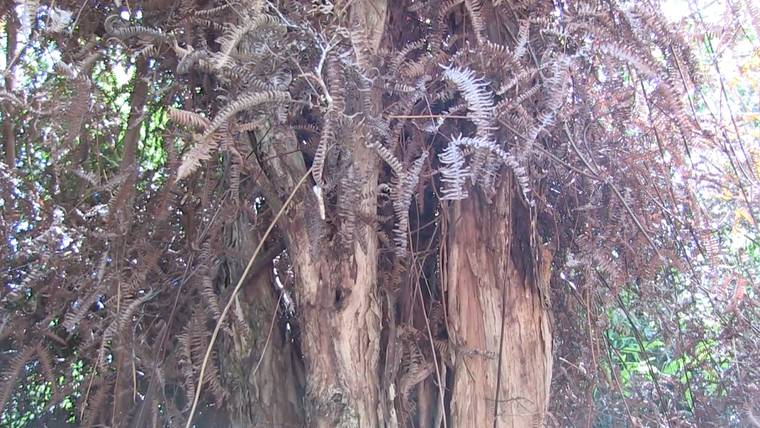LIHUE Recent helicopter surveys prompted foresters with the DLNR Division of Forestry and Wildlife to sample 10 dead ohia in two locations within the Lihue-Koloa Forest Reserve. Six trees tested positive for Ceratocystis lukuohia, the more virulent of the two fungal pathogens causing rapid ohia death, the disease killing ohia across the state.
LIHUE — Recent helicopter surveys prompted foresters with the DLNR Division of Forestry and Wildlife to sample 10 dead ohia in two locations within the Lihue-Koloa Forest Reserve. Six trees tested positive for Ceratocystis lukuohia, the more virulent of the two fungal pathogens causing rapid ohia death, the disease killing ohia across the state.
Late in 2018, the Kauai Rapid Response Team, made up of scientists and managers from county, state, federal, and non-governmental agencies, reported the presence of C. lukuohia on a Department of Hawaiian Home Lands parcel behind Kalalea Mountain in Anahola. A total of 22 trees in three separate locations across Kauai have now tested positive for this more virulent species of the two fungi that cause ROD.
The six most recent are located in the Lihue-Koloa Forest Reserve — five near the Kalaheo-Lawai section and one in the Wailua section of the forest reserve. The dead ohia in upper Wailua is located along Powerline Trail. Both places are fairly accessible, so experts are asking for people’s help in containing the disease. Boot brushes have been installed at numerous trail heads around the island.
Since the disease was identified on Hawaii island In 2014, more than a million trees have died — with more than 90% of those testing positive for C. lukuohia.
Info: Visit www.rapidohiadeath.org.




